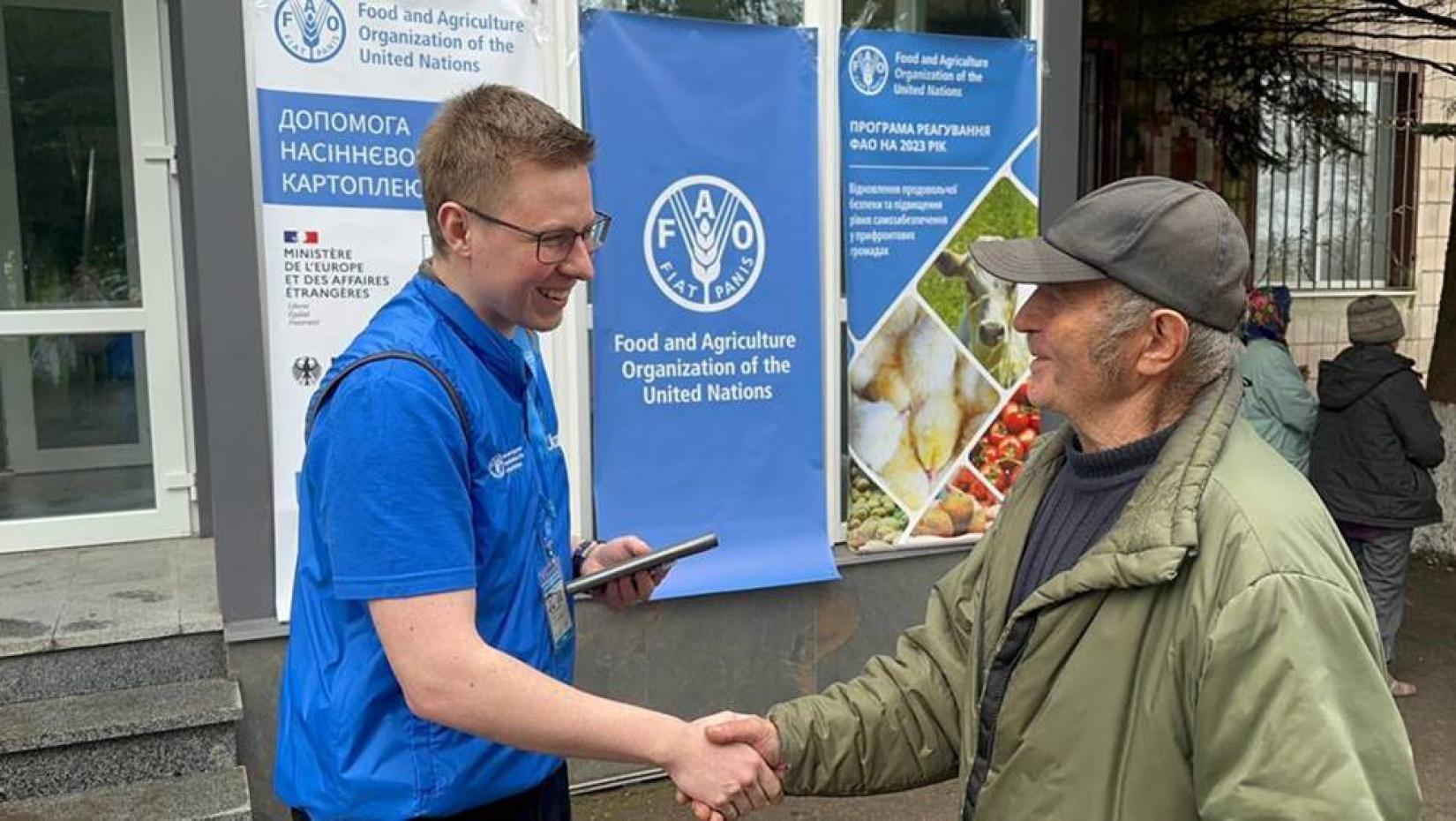Ukraine: FAO surveys impact of war on smallholder farmers
02 June 2023
The findings indicate that damages and losses for small-scale crop and livestock producers exceed USD 3.85 billion

The war in Ukraine and its economic effects have caused major damage to small farmers' production and incomes, as is stated in the new report released by the Food and Agriculture Organization of the United Nations (FAO).
The Impact of the war on agricultural enterprises: Findings of a nationwide survey of agricultural enterprises with land up to 250 hectares surveyed 1 927 small-scale crop and livestock producers in 23 oblasts, including selected rayons in Donetska, Kharkivska, Khersonska and Zaporizka oblasts that are under the control of the Government of Ukraine.
The assessment provides an overview of the impact of the war on small-scale farmers in Ukraine, as well as regional analysis of specific western, central, and front-line oblasts. The majority of interviewees are small enterprises specialized in crops production (81 percent), followed by those engaged in both crop and livestock production (10 percent), as well as specific small-scale livestock production enterprises (9 percent).
“The survey shows the disturbing situation that agricultural producers are facing due to the war” said Pierre Vauthier, head of the FAO Ukraine Country Office. “Prior to the war, the Ukrainian agriculture sector produced sufficient fruits, vegetables, crop and livestock products to feed around 400 million people globally. The war has continuously interrupted the transportation of foods both within and outside the country, threatening the food security of millions around the world. The data from this assessment will help FAO, the Government of Ukraine, and partners identify urgent needs as well as geographical areas to invest in and support smallholder farmers to withstand the current situation and recover quickly.”
The study showed an almost eight percent decrease in the total number of small-scale producers, of which one percent are livestock producers ceasing small crop production, and the other almost seven percent are crop producers who have completely stopped the production. Among the key factors that have led to the interruption and/or reduction of farming include the temporarily closure of farms, losing control of farmland, death of owners and sale of land, all caused or associated to the escalation of the war.
“FAO studied farmers cultivating up to 250 hectares of land, who represent approximately 65 percent of the total number of agricultural enterprises in Ukraine, while they own and use only 7 percent of the total agricultural land,” added Oleksandr Revnivtsev, FAO National Field Assessment Coordinator.
For this assessment, FAO used its adapted agriculture damage and loss methodology, and collaborated with local partners, including the Kyiv School of Economics, the All-Ukrainian Association of Village Councils and Amalgamated Communities, the East-Ukrainian Agricultural Advisory Services for conducting the survey in Donetska oblast and the Office of perspective development for conducting the survey in Zaporizka oblast.
The survey findings are in line with the latest Rapid Damage and Needs Assessment (RDNA2), undertaken jointly by the World Bank, the Government of Ukraine, the European Commission, and the United Nations, and the detailed Agricultural War Damages, Losses, and Needs Review, a part of the RDNA2 report, prepared by Kyiv School of Economics jointly with FAO and World Bank, and the financial support of Global Facility for Disaster Reduction and Recovery (GFDRR).
Key findings
- The overall value of the damages and losses for agricultural enterprises cultivating up to 250 ha is estimated at USD 3.85 billion in the crop and livestock sectors.
- Approximately 12 percent of small-scale agricultural enterprises reported that part of their land is potentially contaminated by unexploded ordnances. Oblasts along the front-line appeared to be the most affected, with 32 percent of respondents reporting so.
- Almost 90 percent of small-scale crop producers reported a decrease in revenues, with over 70 percent of them recording a significant or drastic decrease – over 25 percent. Small-scale livestock farmers appeared to be less affected, however over 60 percent of them reported a decrease in revenues, including 46 percent recording a significant or drastic decrease.
- Smallholder farmers appeared to incur additional debts compared to the same period before the war, increasing from 6 percent in 2021 to 9 percent in 2022.
- Disruptions of the agrifood value chain have also affected the production: on average, 9 percent reported an output buyer stopping operations or not being able to purchase more quantities.
- Most of the producers surveyed face problems with accessing agricultural inputs due to high prices, lack of labour, lack of fuel or electricity to power agricultural equipment or even no access to electricity. In addition, the collapse of agricultural inputs markets (fertilizers and seeds) has been observed particularly in the oblasts along the front line.
- The greatest needs reported, in order to continue the production, are the provision of fertilizers, fuel and seeds, access to feed or fodder, restocking of animals and ability to access markets.
Contact
Viktoriia Mykhalchuk
FAO Ukraine Communication Coordinator
(+38) 098 605 5061
FAO News and Media
(+39) 06 570 53625
FAO-Newsroom@fao.org
Journalists & editors:
For video, photos, audio clips contact: (+39) 06 570 53625 or FAO-newsroom@fao.org.




